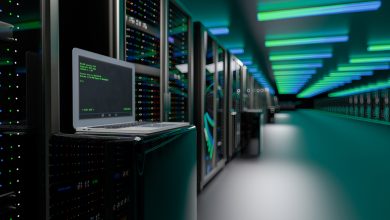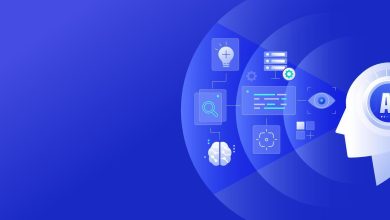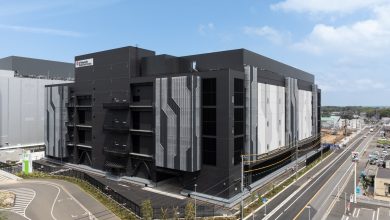TeamViewer Experience Day in Singapore: Connecting IT to OT in Style
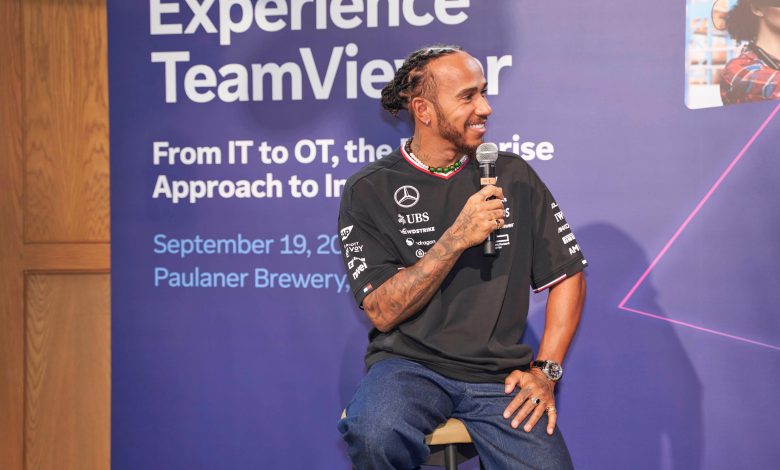
When you think of TeamViewer, it likely conjures images of a tool for remote IT support. Yet, TeamViewer’s potential spans far beyond fixing tech issues from afar. Under the leadership of CEO Oliver Steil, TeamViewer has broadened its vision to encompass “remote everything.” This concept isn’t limited to tech support; it extends to industries ranging from agriculture to Formula 1, aiming to connect anything equipped with computing power.
Founded in 2005, TeamViewer’s original purpose was pragmatic: Reducing the need for on-site IT updates. Today, the company has grown from these humble roots into a global solution provider. As Steil explains, the driving force behind this expansion is the need for efficiency and cost reduction. Industries everywhere are realising they can remotely access much more than just computers. Whether it’s IT-to-IT or factory-to-factory, TeamViewer’s mission is clear – connect people, technology, and data on a global scale.
Despite having only 1,500 employees, TeamViewer’s client base is vast. From DHL and Coca-Cola to Specsavers and most notably with the eight-time Formula 1 constructor champion, Mercedes-AMG Petronas, the company (TeamViewer) is increasingly visible, thanks in part to its high-profile partnerships.
Just for a bit of an instance, Formula 1 driver and former seven-time world champion, Sir Lewis Hamilton and his teammate George Russell rely heavily on TeamViewer software for real-time data during their F1 races. The C-suite executive from TeamViewer notes that Formula 1 offers the perfect “stress test” for this company’s solutions. The high-speed environment of racing can help to expose any weaknesses, which will then be a catalyst in pushing the company to deliver top-tier performance.
Hence, that is why TeamViewer recently hosted its Experience Day at the Paulaner Bräuhaus in Singapore, blending a unique cultural touch with business insights. The choice of venue, a German-style brewery, had a deeper resonance given TeamViewer’s origins and its long-standing partnership with the Mercedes-AMG Petronas Formula 1 team – both with roots in Germany.
This event, held in conjunction with the upcoming Singapore Grand Prix, saw a special appearance by Mercedes’ seven-time world champion, Sir Lewis Hamilton, further linking the world of motorsport with cutting-edge digital technology.
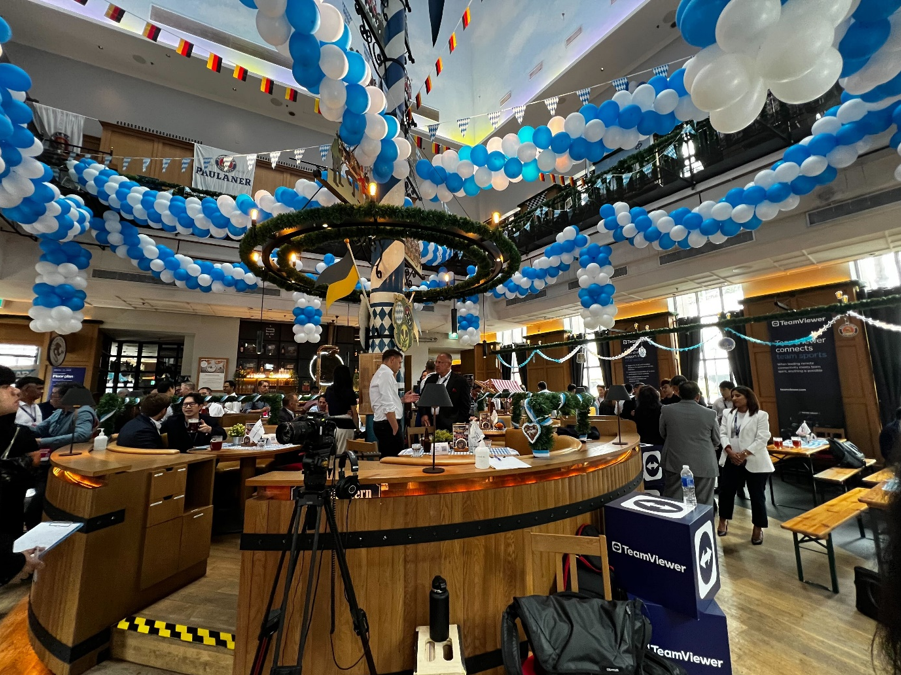
Beyond the Pit Stop: TeamViewer’s F1 Role
TeamViewer’s well-known partnership with Mercedes-AMG Petronas goes beyond a branding exercise. The fast-paced world of Formula 1 racing provides a high-pressure environment where milliseconds matter, making it an ideal testing ground for remote connectivity solutions. Oliver noted that during races, Mercedes drivers Lewis Hamilton and George Russell use TeamViewer’s technology for real-time data analysis, from telemetry to teammate comparisons. The software aids in decisions related to tyre strategy, braking points, and more, all within the span of a few seconds.
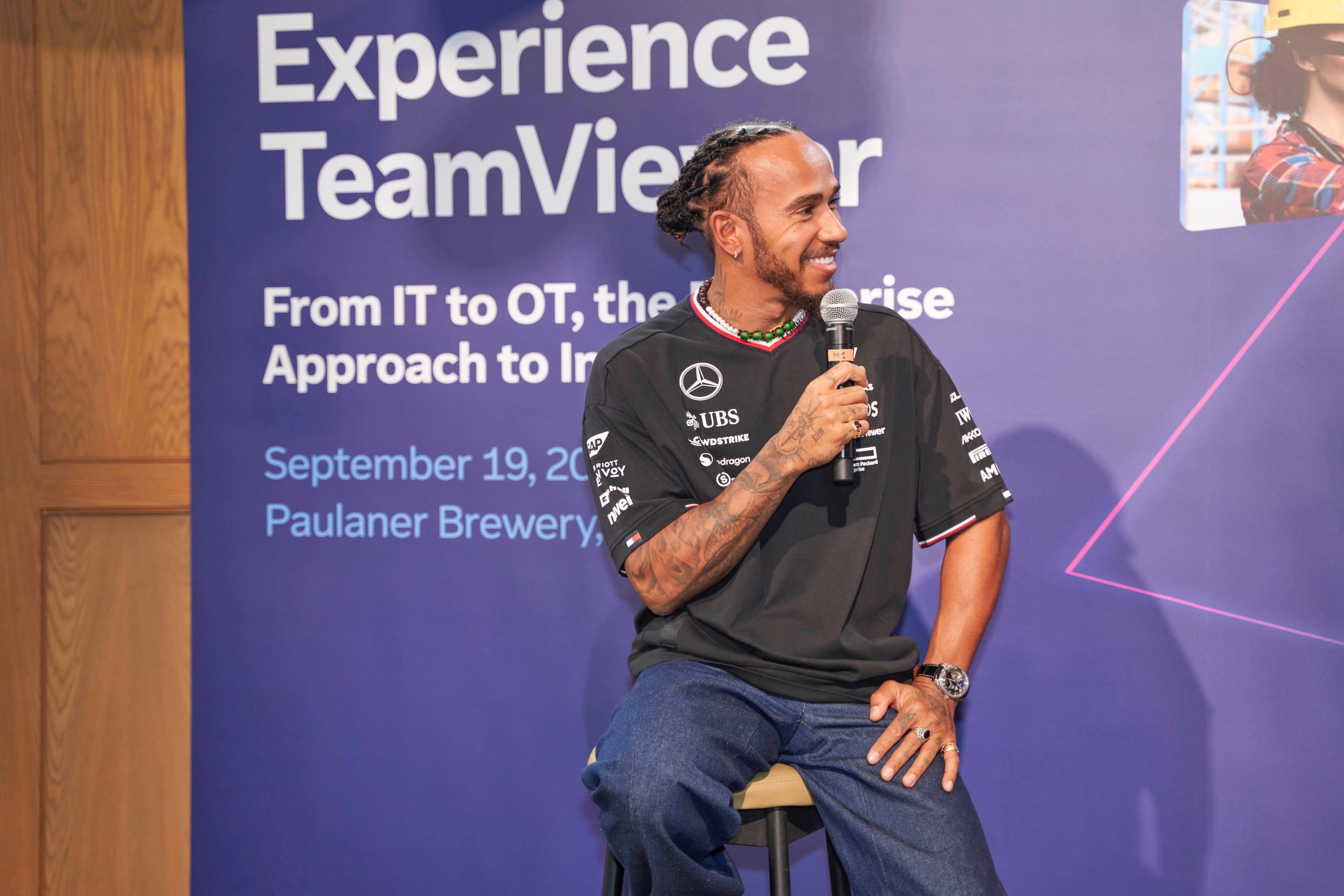
Formula 1 teams, like Mercedes, operate with distributed workforces, meaning that various teams – whether trackside, at headquarters in the UK, or at the power unit division in Brixworth – need to communicate efficiently. TeamViewer’s software helps to synchronise these efforts, ensuring that information flows seamlessly between engineers and strategists across different locations. This use case highlights how remote connectivity can enable real-time decision-making, a capability relevant not only for racing but also for various industries where speed and accuracy are critical.
Connecting IT to OT
But it was more than just helping F1 cars.
At the heart of the event was the theme of bridging the gap between Information Technology (IT) and Operational Technology (OT). As digital transformation accelerates, this integration becomes increasingly critical for industries. Traditionally, IT and OT operated in silos – IT focused on data management and communication, while OT concentrated on the physical processes in factories and other industrial settings. However, the advent of technologies like the Internet of Things (IoT), edge computing, and remote connectivity solutions is reshaping this landscape.
TeamViewer, best known for its remote access software, aims to lead this convergence. The company has evolved significantly since its inception in 2005 as a tool for remote IT support. CEO Oliver Steil explained that TeamViewer’s goal is to connect everything – from PCs to industrial machinery – under the broad concept of “remote everything.” Whether it’s IT connecting to IT systems, IT connecting to factory operations or even factory-to-factory communication, TeamViewer seeks to facilitate seamless integration across all digital touchpoints.
Enhancing the Desk-Less Workforce
Beyond remote IT services, TeamViewer also demonstrated its commitment to digitalising desk-less workforces through its Frontline platform. Frontline is an advanced connected worker solution designed to provide industrial workers with step-by-step instructions, visual guidance, and remote expert support. Using wearable devices such as smart glasses, Frontline helps workers perform tasks more efficiently and safely. Industries like manufacturing, logistics, and warehousing have already adopted this technology to modernise operations.
For example, in the logistics sector, Frontline’s vision-picking solutions are being used to streamline order-picking processes. Warehouse workers equipped with smart glasses receive real-time instructions, reducing errors and speeding up the overall workflow. This is just one of many ways in which TeamViewer is integrating augmented reality into its offerings to enhance productivity.

The platform is designed to be highly adaptable, making it useful for a variety of industries beyond logistics. In manufacturing, for example, Frontline can assist workers in assembling complex machinery by providing step-by-step AR overlays. By integrating wearable computing and AR technology, TeamViewer is helping companies improve both efficiency and safety in industrial environments.
Expanding Partnerships and Global Presence
TeamViewer’s growth has been aided by its strategic partnerships with leading software vendors like Siemens and SAP. These collaborations have enabled the company to offer integrated solutions tailored to specific industries. One notable example is the integration of TeamViewer’s vision-picking solution with SAP Extended Warehouse Management, which is helping to digitalise warehouse processes in Mexico. Such partnerships have not only expanded TeamViewer’s reach but also allowed the company to deliver more specialised, industry-focused solutions.

In addition to SAP, TeamViewer has also collaborated with Manhattan Associates, a global supply chain solutions provider, to enhance its warehouse management offerings. These partnerships, combined with a global go-to-market strategy, ensure that TeamViewer remains a key player in the digitalisation of industrial workforces.
Overcoming Connectivity Challenges in IT-OT Convergence
While remote access has come a long way, challenges remain. Oliver identifies a few major hurdles. Firstly, ensuring a smooth connection in rural or less connected areas is no small feat, requiring innovative solutions to run even on outdated 2G networks. Compatibility is another challenge. TeamViewer must work with a variety of outdated industrial equipment, such as robotic arms running on obsolete operating systems like Windows 3.11. The need to support multiple systems, including Linux, adds to the complexity.
Beyond technical barriers, the convergence of IT and OT introduces another layer of difficulty. These two realms have traditionally operated separately, and persuading OT professionals to adopt remote solutions can be challenging. For them, the idea of remote maintenance may seem alien, especially when factory floors require strict, error-free processes. The shift to cloud-based solutions is another sticking point, with many companies hesitant to connect their industrial operations to the cloud due to latency and security concerns.
Plus, as remote access grows, so does the attack surface. Oliver acknowledges that cybersecurity is a critical concern, particularly after TeamViewer itself was targeted by Russian state-backed hackers. While no customer data was compromised, the incident underscores the importance of security in today’s digital landscape. TeamViewer has since bolstered its security efforts, partnering with companies like Microsoft to protect its cloud-based services.
He believes that traditional cybersecurity approaches, such as firewalls, are no longer sufficient. Instead, the focus should be on hardening infrastructure and ensuring a rapid incident response. This mindset shift is crucial as remote work becomes more prevalent, not only in IT but across industries.
The Future of Remote Access
As remote access becomes the norm across industries, TeamViewer is well-positioned to lead the charge. The company’s ability to adapt to the needs of various sectors, from industrial equipment to Formula 1 cars, showcases its versatility. Despite challenges related to connectivity, interoperability, and security, TeamViewer continues to innovate, ensuring that remote access remains a viable, efficient solution for businesses around the world.
In a post-pandemic world, where remote work is no longer a luxury but a necessity, TeamViewer’s mission is more relevant than ever. By focusing on connecting everything, everywhere, the company is not just reacting to a temporary shift but driving a long-term transformation in how industries operate. As Steil puts it, “Remote access should be deployable everywhere,” and TeamViewer is well on its way to making that vision a reality.


